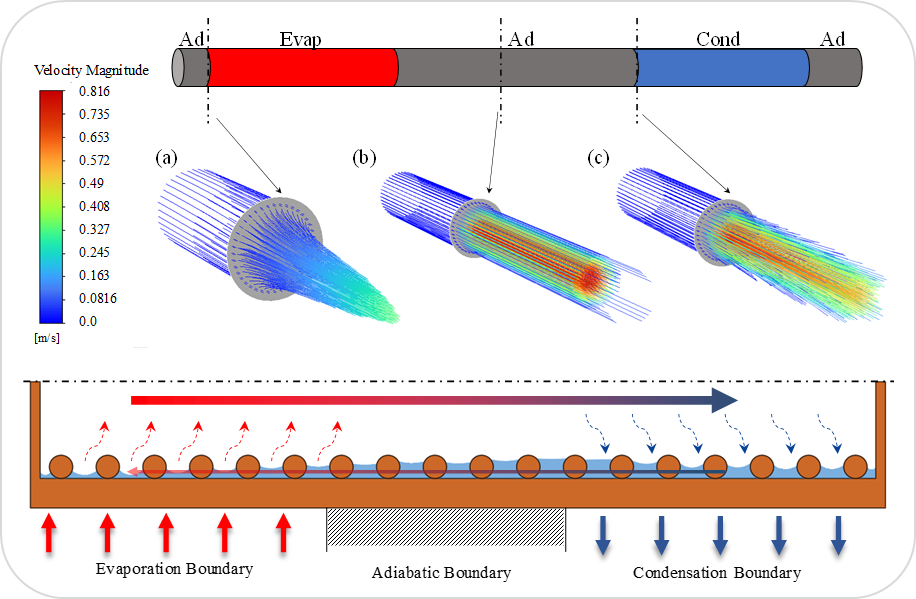
Recently, a research group led by Prof. YU Dali from Hefei Institutes of Physical Science (HFIPS), Chinese Academy of Sciences (CAS), along with Prof. Pan's research group from City University of Hong Kong, deveoped a transient 3D Computational Fluid Dynamics Model to investigate the liquid–vapor flow and heat transfer for a water heat pipe under various non-uniform loads.
The research results were published in Annals of Nuclear Energy.
Heat pipes are highly efficient devices for transferring heat, utilizing the phase transition of a working medium to achieve high-flux heat transfer. Compared to conventional metals, heat pipes have heat transfer efficiency that exceeds them by tens or even hundreds of times. As a result, heat pipes find applications in various fields that require high-density heat transport, including heat export from the core of solid-state small reactors, radiative radiators, fusion reactor divertors, and modern electronic components.
In this study, researchers developed a 3D transient heat pipe model using FLUENT software. The model was validated by comparing its results with experimental data obtained under both uniform and non-uniform heating conditions. The comparison yielded an error rate of up to 4.73%.
With this model, the circumferential flow characteristics of the heat pipe at the wick region under non-uniform heating conditions was observed for the first time via numerical methodology.
What's more, the study looked at how the length of the adiabatic section, the heating power, and the heating range affected the thermal-hydraulic properties of the heat pipe when it was loaded in different ways.
Scientists found that the heat pipe started up much faster when the heating power was increased or the length of the adiabatic section was cut down. They proved that lowering the circumferential heating range didn't change how long it takes to start up. Also, uneven heating power in the horizontal direction made the place on the wall with the highest temperature lean toward the place with the most power. On the other hand, when the heat pipe was heated uniformly, the temperature of the wall reached the lowest.
"Our finding provided valuable theoretical support and analytical tools for further research and development of high profile heat pipes," said Prof. YU Dali.
This work was supported by the HFIPS Director's Fund and CityU Grant.

Schematic diagram and calculation results of heat pipes. (Image by LIU Jian)